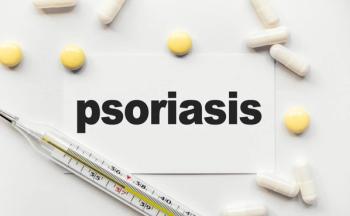
Cost Burden of GPP Much Higher Than Psoriasis Vulgaris, Study Finds
Ten-year mean costs associated with psoriasis-related health care visits were 10 times higher for patients with generalized pustular psoriasis (GPP).
Patients with
The report was
The symptoms of GPP are heterogeneous, explained corresponding author Jean-Eric Tarride, MA, PhD, of McMaster University, and colleagues. Some patients experience persistent symptoms, while others have cycles of relapse and remission.
“While the severity of signs and symptoms is variable with each flare for a particular patient, flares may lead to emergency department (ED) visits or inpatient care for patients with extensive cutaneous and/or systemic involvement, as these individuals can be at a higher risk for complications,” they wrote.
Still, because this subtype of psoriasis is rare, relatively little research has looked into the economic burden associated with the disease, the investigators said. In the new report, the authors sought to determine the burden of GPP in Canada and then compare that burden to those of patients with PV, the much more common type of psoriasis.
The investigators used 2 databases from the Canadian Institute for Health Information to identify patients with GPP (607 patients) or PV (24,828 patients) who visited an emergency department or health care clinic, or who were hospitalized as inpatients between April 2007 and March 2020. They then calculated the costs associated with those visits, looking both at overall costs, and at costs specifically when the “most responsible diagnosis” was GPP or PV. “Most responsible diagnosis” (MRD) is a term used to refer to the condition believed to be responsible for the greatest portion of a patient’s care.
The resulting prevalence analysis showed that the 10-year mean costs of care in which GPP was the MRD were $2393, compared to just $222 when PV was the MRD. In an incidence analysis, the authors found patients with GPP had higher 3-year mean costs of $3477 in disease-related care, compared to $503 for patients with PV. Ten-year all-cause costs for people with GPP were $49,695, compared to $42,574 for people with GV, the authors said.
“This 10-year difference in MRD and all-cause costs was mostly driven by the higher number of MRD hospitalizations observed among GPP compared to PV patients,” Tarride and colleagues said.
Looking at mortality, the investigators again found that GPP was associated with worse outcomes. Inpatient or emergency department mortality was 9.2% in the GPP group in the investigators’ 10-year prevalence analysis, compared to 7.3% in the PV group. The 3-year incident analysis showed a mortality rate of 5.2% for GPP and 2.1% for PV.
The authors said their findings are generally aligned with previous research in France and Sweden. However, they said there were notable limitations to the data set used in the new report, including the potential for mis-coding in the data set, and differing regulations in provinces related to reporting requirements. Due to those limitations, and others, the investigators said their study likely represents an underestimation of the burden of GPP. They said additional research will be required to gain a more comprehensive understanding of the ways GPP affects people’s lives.
“Future areas of research include the need to determine the burden of GPP in outpatient settings… and to document the impact of GPP on quality of life, work/school productivity, as well as out-of-pocket expenditures and caregiver burdens,” they said.
Reference
Tarride, JE, Prajapati VH, Lynde C, et al. The burden associated with generalized pustular psoriasis: a Canadian population-based study of inpatient care, emergency departments, and hospital- or community-based outpatient clinics. JAAD Int. 2023. doi:10.1016/j.jdin.2023.03.012.
Newsletter
Stay ahead of policy, cost, and value—subscribe to AJMC for expert insights at the intersection of clinical care and health economics.







































